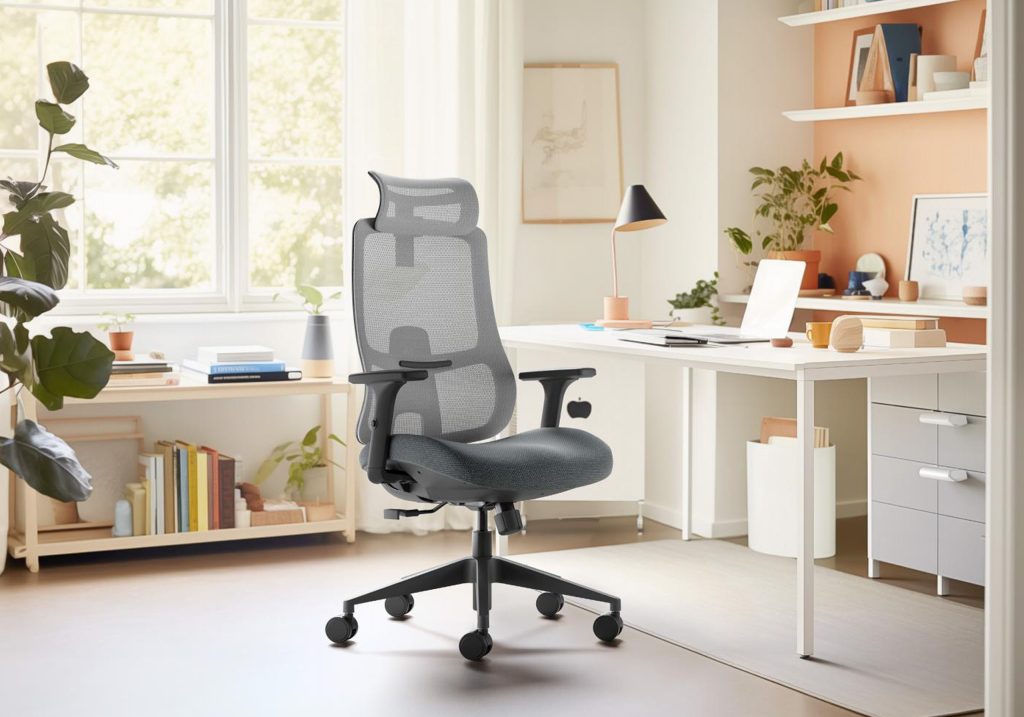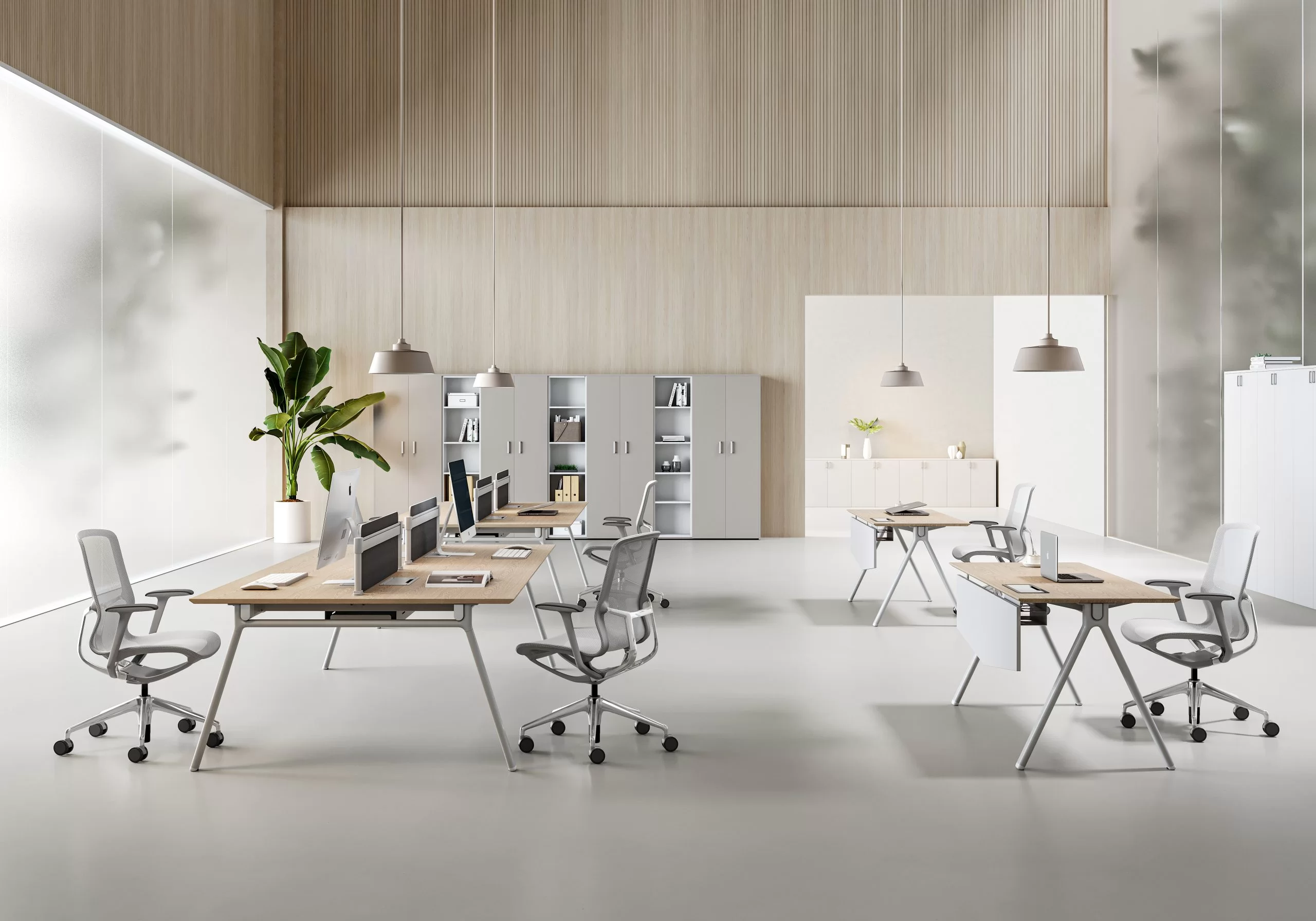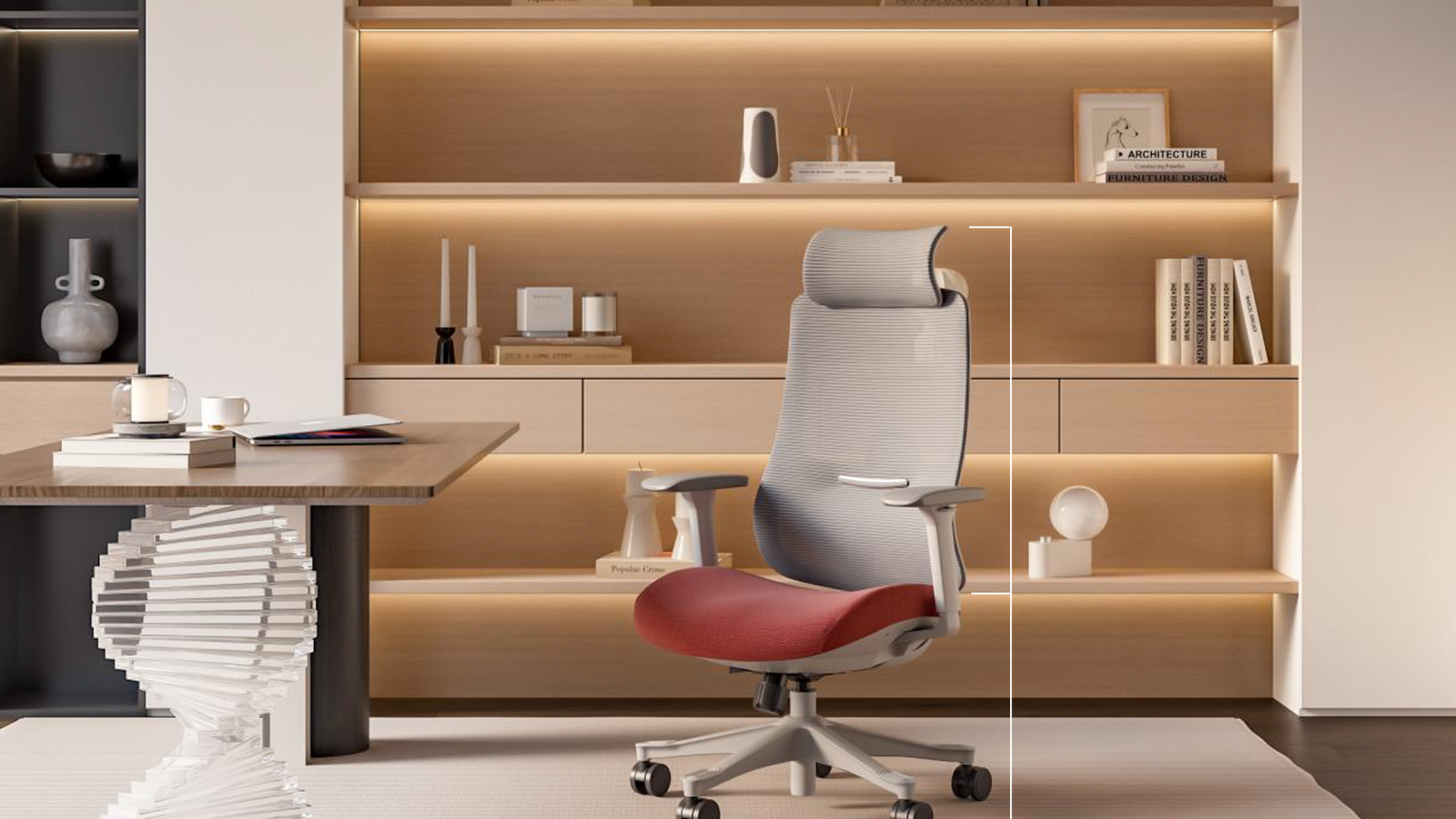When you purchase desk chairs for a team—not just for yourself—fit becomes a strategic decision, not a personal preference.
Understanding key desk chair dimensions such as seat height, seat depth, seat width and backrest height helps office buyers and facility managers create comfortable, productive workstations for a wide range of users.
This guide explains standard office chair dimensions, how to measure them correctly, how they relate to user height and desk height, and how to turn those numbers into clear specifications for office projects.
What "Desk Chair Dimensions" Actually Include
Before looking at ranges, it helps to define what we mean by desk chair measurements. In most office seating spec sheets, you will see:
- Seat height – floor to top of the seat.
- Seat depth – front edge of the seat to where it meets the backrest.
- Seat width – side-to-side width of the sitting surface.
- Backrest height – from seat to the top of the backrest.
- Armrest height and spacing – height above the seat, and distance between armrests.
- Base / footprint width – diameter or width of the chair base, including casters.
Getting these measurements right ensures that feet rest flat on the floor, thighs are supported, elbows align with the desk, and the chair can move freely within the workspace.
Why Office Chair Dimensions Matter for Business
For individual users, the wrong chair size leads to awkward posture, discomfort and more frequent breaks. At scale, this becomes a real business issue:
- Reduced productivity – employees move, stretch or stand more often to relieve discomfort.
- Higher risk of pain and injury – poorly matched chairs increase strain on the lower back, shoulders and neck.
- Inconsistent workspace experience – if chair sizes vary too much, hot-desking or shared spaces feel unpredictable.
- More returns and complaints – mis-sized chairs often come back to the facilities or procurement team.
Standardising desk chair measurements across your office fleet helps you avoid these problems. It also makes furniture planning, budgeting and future expansions more predictable.
Standard Office Chair Dimensions – Seat Height, Depth & Width
Across modern office chairs, some dimension ranges have become common because they fit the majority of adults. Use the following as a starting point when drafting your specs.
Typical Desk Chair Dimensions
| Dimension | Common Range | How It Affects Comfort |
|---|---|---|
| Seat height | 16–21 in (41–53 cm) | Determines knee angle and whether feet rest flat on floor. |
| Seat depth | 16–18 in (41–46 cm) | Ensures thighs are supported without cutting behind knees. |
| Seat width | 18–20 in (46–51 cm) | Provides enough room without making posture unstable. |
For larger users or executive chairs, seat width often increases to 20–24 in, and seat depth can extend to 18–22 in. For petite users, a slightly narrower and shallower seat is more comfortable.
As an office buyer, aim for adjustable seat height and, if possible, adjustable or sliding seat depth. This allows each employee to fine-tune the fit within the standard range.

Backrest, Armrests & Overall Chair Footprint
Even if seat dimensions are correct, backrest and armrests can make or break ergonomics.
Backrest height
- Mid-back chairs: roughly 12–22 in (30–56 cm) above the seat.
- High-back chairs: roughly 22–32 in (56–81 cm), often with head support.
A mid-back model is enough for many workstations, while high-back chairs suit management roles or people who sit for long stretches.
Armrest height and spacing
- Typical armrest height above the seat: 7–10 in (18–25 cm).
- Distance between armrests should allow elbows to rest close to the body while still clearing the torso and clothing.
Look for 4D or at least 2D adjustable armrests so employees can set height, width and sometimes depth/angle to match their shoulders and desk setup.
Base / footprint
- Common base width: 24–28 in (61–71 cm).
This width gives enough stability and room for casters without consuming too much floor space. When planning tight layouts or benching systems, confirm that two chairs can slide past each other without constant collisions.
How to Measure Office Chair Dimensions Correctly
To write accurate specifications or compare models, you need consistent measurement methods. Here is a simple process you can share with your team.
Step-by-step measurement guide
Seat height
- Place the chair on a level floor.
- Measure from the floor to the highest point of the seat surface, not the frame.
- If the chair is adjustable, record both minimum and maximum heights.
Seat depth
- Measure from the front edge of the seat to the point where it meets the backrest.
- If the seat slides, measure the minimum and maximum positions.
Seat width
- Measure the usable sitting width—left to right—excluding any outward curves or decorative flares that are not truly sit-able.
Backrest height
- Start at the top of the seat cushion and measure vertically to the top edge of the backrest.
Armrest height and spacing
- Height: seat surface to the top of each arm pad.
- Spacing: distance between armrest inner edges at seat level.
Base / footprint width
- For 5-star bases, measure the widest distance between wheel tips.
Standardising this method across all models you evaluate makes your comparisons meaningful and your spec sheets far easier to maintain.
Matching Office Chair Dimensions to User Height & Desk Height
The goal is to keep knees and elbows at comfortable angles while keeping feet flat on the floor. A simple way to think about desk chair dimensions versus body height:
Recommended seat height by user height
| User Height (approx.) | Recommended Seat Height Range |
|---|---|
| 4′10″–5′2″ (147–158 cm) | ~15–17 in (38–43 cm) |
| 5′3″–5′7″ (160–170 cm) | ~16–18 in (41–46 cm) |
| 5′8″–6′2″ (173–188 cm) | ~17–21 in (43–53 cm) |
| 6′3″+ (190 cm+) | 18 in+ (46 cm+), deeper seat |
For a typical fixed desk height around 29–30 in (73–76 cm), a chair offering 16–21 in seat height adjustment will accommodate the majority of employees.
If your office uses sit-stand desks, ensure the chair’s height range still allows neutral elbow angles at the lowest seated position and easy transitions when employees adjust desk height.
Specifying Desk Chair Measurements for Office Projects
When you buy chairs at scale, vague terms like “ergonomic” are not enough. Clear dimension-based specifications make tenders, supplier quotes and product comparisons much easier.
Example dimension specifications
When writing a tender or RFQ, you might specify:
- Seat height: adjustable 16–21 in
- Seat width: minimum 18 in, recommended 18–20 in
- Seat depth: adjustable or 16–18 in effective depth
- Backrest height: minimum 20 in above seat for task chairs
- Armrests: height adjustable, with inner width adjustable to suit 18–20 in seat
- Base width: maximum 26–28 in to fit between desks
You can also include:
- Compliance with relevant ergonomic and durability standards.
- Minimum warranty period for structural components and gas lift.
- Maximum recommended user weight and guidance for “big & tall” models if needed.
By standardising these office chair measurements, you reduce returns, avoid mismatched models and give employees a consistent experience across locations.

Special Cases – Petite, Big & Tall, Conference & Home Offices
Not every chair in your organisation serves the same purpose or user type. Some scenarios require special attention to dimensions.
Petite users
For shorter employees under about 5′2″ (158 cm), look for:
- Seat height that can drop to around 15–17 in.
- Shallower seat depth so the front edge does not press into the back of the knees.
- Possibly a smaller base to make movement easier in tight spaces.
Big & tall users
For taller or larger-framed users, consider dedicated models with:
- Seat width up to 22–24 in.
- Deeper seats around 18–22 in.
- Higher maximum seat height and reinforced frames and bases.
It is often more cost-effective to buy a few dedicated “big & tall” chairs than to oversize every chair for the entire workforce.
Conference and meeting rooms
Conference chairs are usually:
- Slightly simpler and less adjustable.
- Seat width around 18–22 in and depth around 16–18 in.
- Designed more for short-term comfort and clean aesthetics than for 8-hour use.
Make sure dimensions allow chairs to push fully under tables to maximise room capacity.
Home and hybrid offices
For employees working remotely, you may use the same dimension ranges but allow more flexibility in style and footprint. The key is still alignment between body height, seat height and desk height, even if the desk is a dining table or compact workstation.
Desk Chair Dimension Checklist for Office Buyers
Use this quick checklist when evaluating models or discussing options with suppliers:
- Seat height range covers your shortest and tallest employees.
- Seat depth allows 2–3 fingers of space between seat front and back of the knee.
- Seat width provides room without forcing elbows too far from the body.
- Backrest supports the lumbar region and, if needed, upper back and neck.
- Armrests are adjustable in height and width and fit under your desks.
- Base width fits your layout and allows movement between desks.
- All key office chair dimensions are clearly listed in spec sheets and contracts.
Frequently Asked Questions
Q1: What is a good seat width for most office workers?
For most adults in a standard office environment, a seat width of 18–20 in is comfortable. This gives enough room for different body types while keeping armrests close enough to support the forearms without spreading the shoulders too wide.
Q2: Can one chair size fit everyone in a hot-desking space?
No single configuration will be perfect for every person, but a chair with broad adjustment ranges—especially in seat height and armrest height—can fit the majority. For employees at the extreme ends of the height range, consider a few specialised models.
Q3: How deep should the seat be for long-hours desk work?
A comfortable seat depth typically falls around 16–18 in. When the user sits back against the backrest, there should be a gap of about 2–3 in between the seat front edge and the back of the knees to maintain circulation.
Q4: How do desk height and chair height work together?
Once the chair is adjusted so that feet are flat on the floor and thighs are roughly parallel, the desk height should allow elbows to rest at about a 90–110° angle. If the desk is too high, you may need an adjustable desk or a keyboard tray to maintain neutral shoulder and wrist posture.
Q5: Do conference chairs need the same level of adjustability as task chairs?
Not necessarily. Conference seating is used for shorter periods, so a fixed but well-chosen set of dimensions is often sufficient. However, if meeting rooms are used all day for hybrid work, providing adjustable chairs will improve comfort.
Conclusion & Call to Action
Well-chosen desk chair dimensions are the foundation of a comfortable, productive office. By defining clear ranges for seat height, depth and width, aligning them with user height and desk height, and turning them into procurement-ready specifications, you can support employee wellbeing and reduce long-term ergonomic risks.
When you plan your next office fit-out or upgrade, treat dimensions as part of your strategy—not an afterthought. Create a standard spec sheet, share it with your suppliers, and insist on chairs that are designed to fit the people who rely on them every day.



